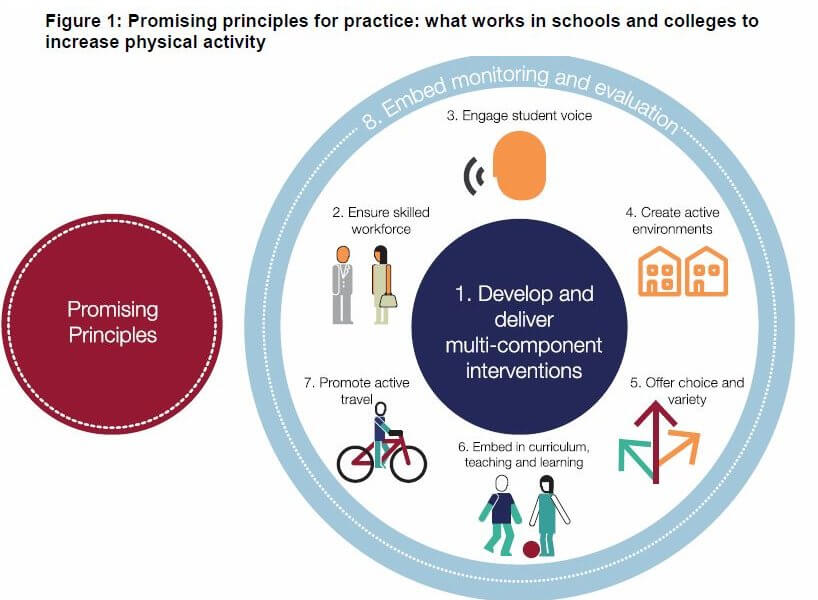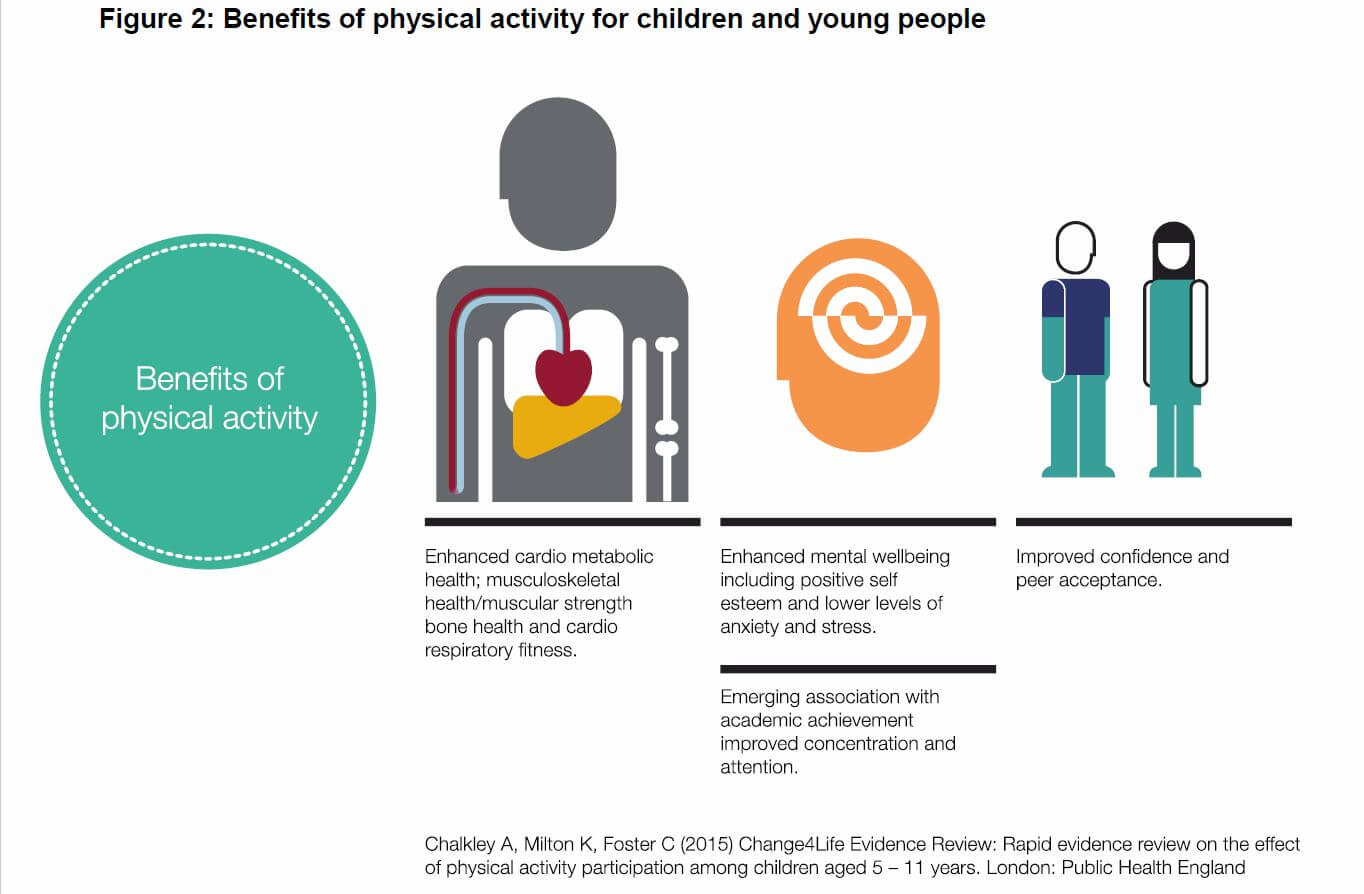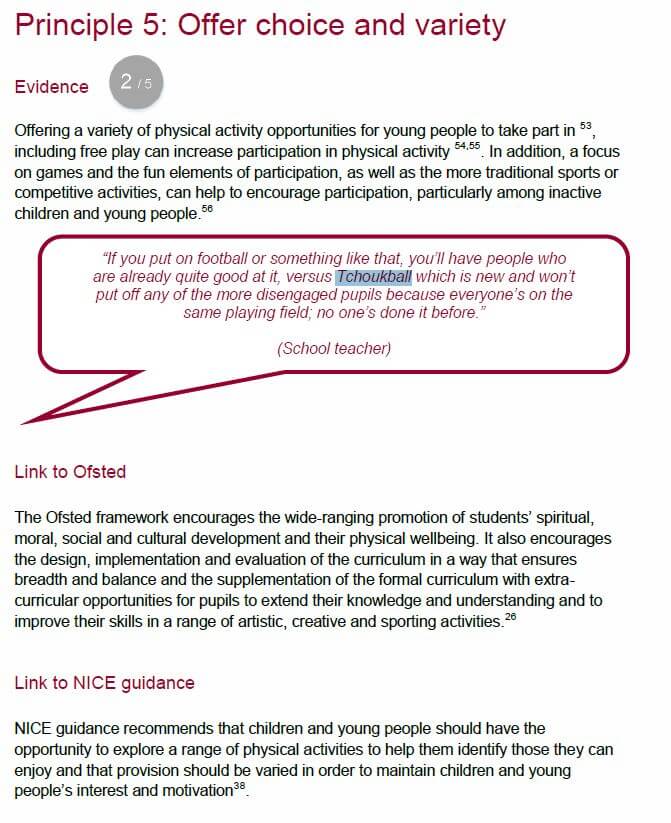So apart from being great for encouraging socialising and building confidence and team working skills, it’s also a great fun accessible and inclusive physical activity. But what are the benefits of that?
In this 2015 article by Public Health England on encouraging young people engaged in physical activity they say the following:
“Emerging evidence suggests an association between being physically active and academic attainment and attention.(Ref 1) Being physically active also helps to promote physical and emotional health and wellbeing (Refs. 2,3) and children and young people who are physically active are more likely to continue the habit into adult life. (Ref 4)…. The evidence has been distilled into eight promising principles for practice, which have been tested with children and young people and practitioners (see Figure 1 – [see right]).” [references below, emphasis added]
Given that taking part in circus skills is a physical activity, we think we fall under Promising Principle 5 – “Offer choice and variety.” This is because, not only is learning circus skills a good alternative choice to mainstream sports, but also even within the umbrella term of ‘circus skills’ there are a myriad of different disciplines to choose from (juggling, spinning, acrobatics, aerial, unicycle etc etc) and a veritable plethora of ways to approach each discipline: whether its solo practice, or peer learning or collaborating in a big show.

So learning circus skills is abundant with choice and variety. Especially for those that may be turned off from competitive sport and appreciate the creative and artistic side of performing arts, a bit like rhythm gymnastics or icescating. But don’t worry, we are so broad-church that we also even have a competitive sports juggling and fighting gladiators! It’s also inclusive and accessible because we cater for all abilities and there will be something for everyone to engage with regardless of age, sex and inclination.
There are also just some intrinsic benefits of being physically active, such as those listed in the image on the left here (Fig. 2 of Public Health England 2015). Listed there are: fitness, strength and bone health; enhanced wellbeing, positive self esteem and lower levels of anxiety and stress; improved concentration and attention; and improved confidence and peer acceptance. Boom!
References from first quote above:
1. Chalkley A, Milton K, Foster C (2015) Change4Life Evidence Review: Rapid evidence review on the effect of physical activity participation among children aged 5 – 11 years. London: Public Health England
2. Department of Health (2011) Start Active, Stay Active
3. British Heart Foundation National Centre for Physical Activity and Health (2013) Making the case for physical activity. Loughborough University
4. Trudeau F, Luarencelle L and Shephard RJ (2004) Links between childhood and adulthood physical activity Med Sci Sports Exerc. 2004 Nov 36(11):1937-43

